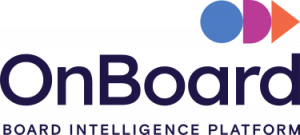Successful Policy Development From Start to Finish

The connective tissues that keep an association functioning are its policies. All associations have policies even if they are just functional basics like finance and membership. Many associations have a much more elaborate suite of policies, encompassing things like branding, communications, orientation, human resources and more. Maintaining your association’s health includes performing regular reviews for successful policy development.
A policy review will make the organization feel more efficient and productive. As each policy is reviewed you will be validating its relevance, and the trend today is toward plain language and clear, concise wording.
I have been spearheading a policy review in my current organization, the International Alliance of ALS MND Associations. In this article, I am sharing some dos and don’ts that I have learned along the way.
DO: Assemble a Team to Help With the Work
The third time was the charm for me here. I tried with a committee of the board (everyone was too busy); I tried with another executive director who was also doing a policy review (we both kept pushing it off). Finally, I assembled a team of volunteers with only one board member who acted as a liaison. That team got the job done. The group came from my network of association professionals and the legal community. Since we are an international organization, our policy review team included two from Canada, one from Germany, one from Scotland and one from Ireland. Since they all had diverse work experience in addition to geographies, the feedback received was invaluable for successful policy development.
DO: Meet Regularly to Keep Momentum Going
Since everyone works better to a deadline, we found that setting recurring weekly meetings kept us focused on the task at hand. Then we cancelled the meeting on weeks where we had nothing to review or there was a conflict. This project was a lot of work, so weekly meetings helped split it up. It was analogous to a family having a zoo membership – we didn’t feel we needed to spend the entire day at the zoo and do everything at once, but instead we could break it into manageable chunks.
DO: Set Up a Table of Contents
Look at your existing policies and what policies are necessary, and set up an ideal table of contents for what policies you would like to have as an outcome. Do not just rehash history and update the existing policies. Make sure you have what you need, which may require a mix of revised, new and combined. For example, do you need a separate investment policy or can you have a finance policy that is also inclusive of investment clauses?
DO: Gather Benchmarks From Other Associations
Policy is an area where you do not have to re-invent the wheel for successful policy development. It is a perfect opportunity to benchmark against other associations and use their policies as templates and precedents. Use what you like and discard the rest. In our recent policy review, we used policies from a broad range of associations, saved them all in Dropbox so they were accessible to the whole team, and then started drafting one at a time.
DO: Review Against Objectives When Done
Again, if the objective was to “connect legal obligations to member values,” then state your member values and make sure each policy meets that objective at the end.
DON’T: Put Off the Policy Review Because Other Things Seem More Important
If you have assembled the right team and set the schedule, you should be able to keep the project moving with a minimal amount of heavy lifting. We found that it was easiest to have one person draft each policy, then have the group critique. Then we passed the policy back to our governance committee and ultimately our board for feedback.





















